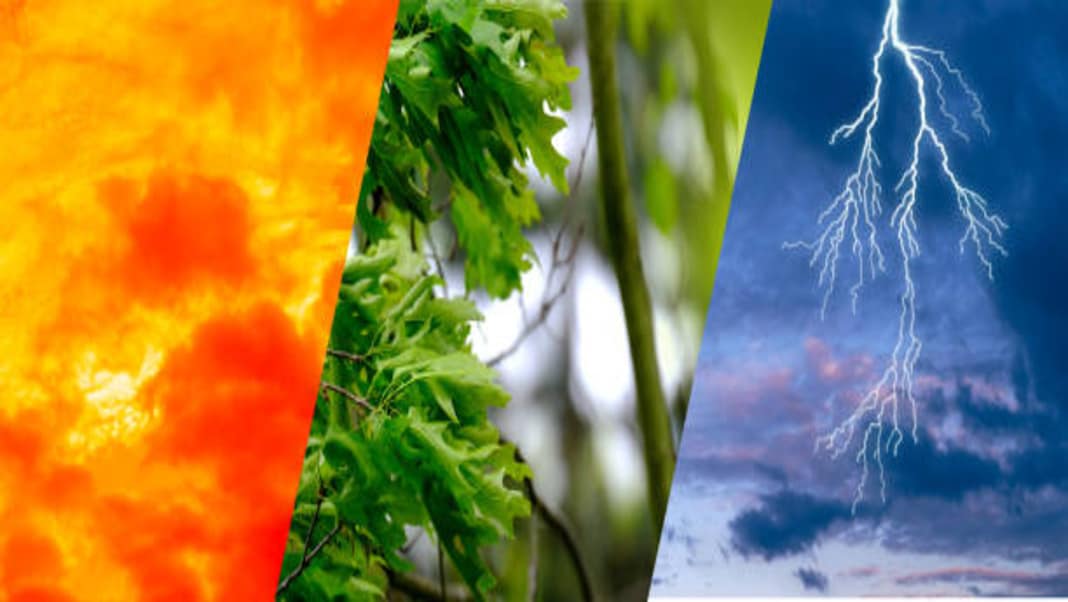Guwahati, July 16: One of the wettest places in the world, Sohra (Cherrapunji) is now having extreme weather conditions, a study says.
A study conducted by researchers from the North-Eastern Hill University (NEHU) has revealed significant future changes in the climate of Sohra (Cherrapunji), known for its extreme weather conditions. The study utilizing the Statistical Downscaling Model (SDSM) and data from the Second-Generation Canadian Earth System Model have projected notable increases in both temperature and precipitation in the coming decades.
Sohra (Cherrapunji) is located at the Southern edge of stiff mountainous cliffs of Meghalaya in North-Eastern India and is at an altitude of about 4823 feet (1484 m) above the mean sea level. The average temperature is moderate and ranges between 11.6 °C during January (Winter) to 20.6 °C during August (Summer), respectively.
SDSM is used to project climate change impacts at a regional level, providing a computationally efficient method to downscale global climate model (GCM) outputs. This method is particularly suitable for regions with complex topographies and extreme climatic conditions
The study, conducted by Raju Kalita, Dipangkar Kalita, and Atul Saxena from the Department of Physics at North-Eastern Hill University, utilized SDSM to downscale global climate model outputs to a regional level.
The study suggests that in the future, precipitation will increase during the monsoons, and the temperature extremes will increase during the winter season. The researchers indicates that Sohra may witness a dry and harsh winter as the precipitation change is negligible and the temperature change is highest during this season in future periods.
“This warming trend is attributed to increased greenhouse gas emissions and aerosol concentrations” the study said.
Analysis of observed mean annual temperature (maximum and minimum), precipitation, and diurnal temperature range (DTR) was carried out for Sohra from 1979 to 2020 to determine the trend and magnitude of that trend.
Previous studies on climate extremes at Sohra also suggest that the Consecutive Dry Days (CDD) have increased significantly by 0.54 days/year, while the Consecutive Wet Days (CWD) have decreased significantly with 0.36 days/year during the recent period.
“Therefore, water scarcity during the dry winters may prevail in the future, which is a well-known problem for people living in Sohra. However, increase in monsoon precipitation in the future may increase frequent flooding in low-lying areas such as the North-Eastern part of Bangladesh, as most of the rainwater from Sohra is drained into the Bangladesh flood plain during the Monsoon season” the study says.
Increased Rainfall
The study forecasts a substantial increase in average monthly precipitation from April to July and in October across all future periods. The future periods are Near Future ( 2021-40), Mid Future( 2041-70) and Far Future( 2071-2100).
In contrast, decrease in precipitation will be observed for March and August of the Near Future (NF) and September of Mid Future (MF) and Far Future (FF) periods in all three scenarios. However, little changes will be observed in January, February, November, and December months for all the scenarios in the future.
Notably, the monsoon season is expected to witness the highest surge in rainfall, significantly impacting local agriculture, water resources, and infrastructure. Conversely, decreases in rainfall are projected for March, August, and September in various future scenarios.

Maximum Temperatures
Results show that for all the scenarios, the projected maximum temperature will increase every month throughout the year in future periods. The highest change in maximum temperature is shown by January month (2.6-4.3 °C) in all the scenarios during the entire future periods. It is observed that the change in maximum temperature increases from March, reaches a peak during July, and then decreases till Sep. Again, it starts rising from October, peaks during January and goes down till March. This indicates that the summer and winter months will be most affected in the future as the increase in daytime temperature is much higher relative to the other months.
Minimum temperatures
The scenarios in the Near Future, Mid Future, and Far Future show that the minimum temperature will also increase almost every month. Results show that the winter and monsoon seasons will be the most affected , followed by the post-monsoon season at the end of the 21st century.

Implications for Sohra
The findings of this study are crucial for local policymakers, farmers, and residents. With Sohra’s unique climatic conditions, understanding these future changes will aid in developing adaptive strategies to cope with increased precipitation and rising temperatures. Improved water management practices and infrastructure development will be vital to addressing the challenges posed by these climatic.
“The research highlights the importance of regional climate projections in understanding local-scale impacts of global climate change” the study says.

Also Watch
Find latest news from every corner of Northeast India at hubnetwork.in, your online source for breaking news, video coverage.
Also, Follow us on-
Twitter-twitter.com/nemediahub
Youtube channel- www.youtube.com/@NortheastMediaHub2020
Instagram- www.instagram.com/ne_media_hub





